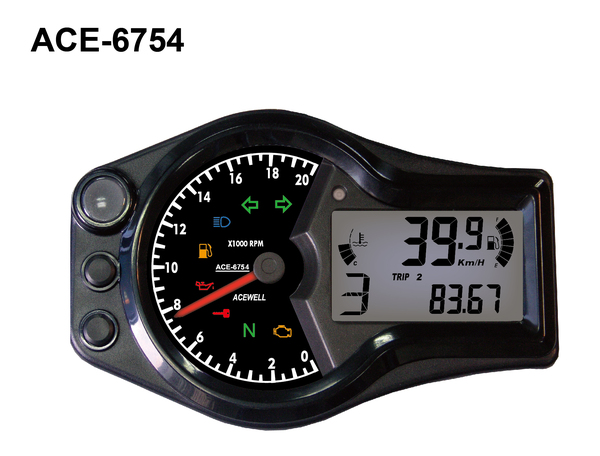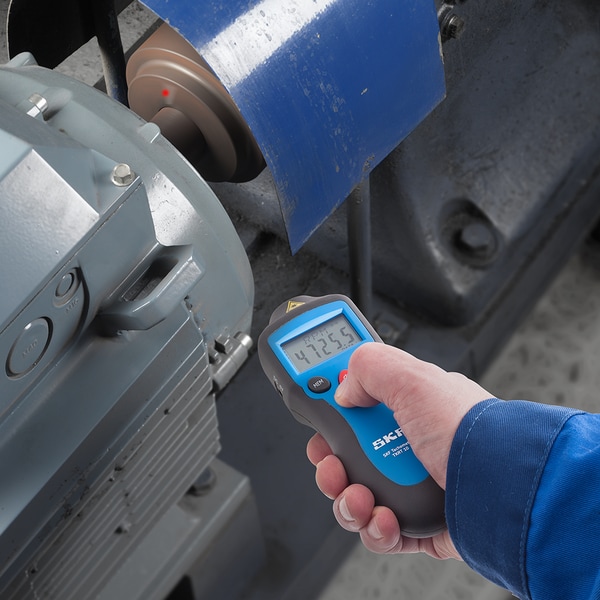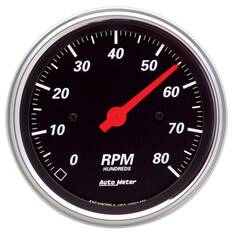Tachometer Fundamentals: Everything You Required to Know for Accurate Readings
Tachometer Fundamentals: Everything You Required to Know for Accurate Readings
Blog Article
The Value of a Tachometer in Keeping An Eye On Engine Rate and Performance in Automotive Applications
In the world of auto engineering, the tachometer stands as a crucial instrument in the vehicle driver's collection, offering a straight window right into the internal workings of a car's engine. Past its function as a plain gauge of transformations per min (RPM), the tachometer offers as an important device for enthusiasts and professionals alike, providing real-time insights right into engine efficiency and health.
Significance of Monitoring Engine RPM
Monitoring engine RPM, or changes per minute, is a vital aspect of auto upkeep and efficiency examination. Engine RPM straight correlates with the rate at which the engine's crankshaft turns, showing how rapidly the engine is running - tachometer. By keeping an eye on RPM, auto mechanics can examine the wellness of the engine, spot potential problems, and fine-tune efficiency. An irregular RPM reading might signify issues such as engine misfires, faulty stimulate plugs, or concerns with the fuel delivery system. Constantly high RPM readings can show aggressive driving behaviors or the need for a higher equipment shift to improve gas performance.
Furthermore, checking engine RPM is vital for efficiency analysis in racing and high-performance lorries. Maintaining optimum RPM degrees is crucial for achieving peak power outcome and velocity. Racers frequently utilize tachometers to guarantee they are running within the optimal RPM range for maximum performance. In recap, checking engine RPM is not just essential for detecting issues however additionally for enhancing engine performance in different automotive applications.

Benefits of Real-Time Data
In vehicle applications, real-time information plays a critical duty in providing immediate understandings into the efficiency and condition of the vehicle. By constantly keeping an eye on numerous criteria such as engine rate, temperature level, fuel usage, and extra, real-time information supplies numerous benefits that add to improved efficiency and security on the road.
In addition, real-time data facilitates performance optimization by supplying prompt responses on driving routines and engine effectiveness. Motorists can adjust their habits in real-time based on this info to attain far better gas economy and prolong the life expectancy of their lorry.

Furthermore, real-time information plays an important function in contemporary automotive diagnostics, making it possible for specialists to quickly detect and resolve malfunctions. This results in reduced downtime, reduced maintenance expenses, and eventually, boosted overall automobile integrity and longevity (tachometer). By harnessing the power of real-time data, automotive stakeholders can make informed choices that favorably affect both the performance and durability of the car
Impact on Gear Shifts
Reliable gear changes in automobile applications significantly influence total performance content and driving experience. The tachometer plays a crucial duty in maximizing gear changes by offering real-time engine rate information to the driver. When approaching the redline on the tachometer, it signals the vehicle driver to upshift to stop over-revving the engine and creating prospective damages. On the other hand, downshifting at the appropriate moment can aid keep the engine in its power band, making certain responsive acceleration when required.
Furthermore, the tachometer help in attaining smoother gear transitions, specifically in hands-on transmissions. By keeping track of engine speed, vehicle drivers can execute gear shifts at the optimal RPM array, reducing snagging movements and lessening endure the transmission elements. This accuracy in equipment adjustments not only boosts driving convenience yet additionally adds to fuel effectiveness.
Enhancing Fuel Effectiveness
Offered the important role the tachometer plays in optimizing equipment changes for performance and engine health, it straight adds to optimizing gas efficiency in automotive applications. By providing real-time feedback on engine rate, the tachometer helps vehicle drivers in preserving one of the most effective RPM array for gas economic climate. When chauffeurs constantly keep an eye on the tachometer and change their motoring habits accordingly, they can prevent unneeded fuel usage brought on by over-revving or hauling the engine.
Additionally, the tachometer helps vehicle drivers recognize the most fuel-efficient gear to be in at any given minute, avoiding the engine from working harder than required. In conclusion, the tachometer serves as an important device in enhancing fuel efficiency by advertising ideal driving behaviors and recognizing areas for improvement in the vehicle's performance.

Optimizing Engine Durability
The tachometer's duty in keeping an eye on engine rate and performance is crucial in ensuring the durability of automotive click to investigate engines. By utilizing the tachometer effectively, vehicle drivers can maximize engine long life through conscious RPM administration. Constantly revving an engine expensive can bring about extreme damage on critical parts, such as the pistons, valves, and bearings. With time, this can result in lowered engine efficiency and prospective breakdowns. Monitoring the tachometer enables motorists to remain within the recommended RPM array for their vehicle, preventing unnecessary strain on the engine and prolonging its life-span.

Final Thought
Finally, the tachometer plays a vital duty in keeping an eye on engine speed and efficiency in auto applications. By supplying real-time data on RPM, it permits effective equipment changes, improved fuel effectiveness, and maximized engine longevity. This device is essential for preserving optimum engine efficiency and ensuring the overall performance of a vehicle.
Report this page